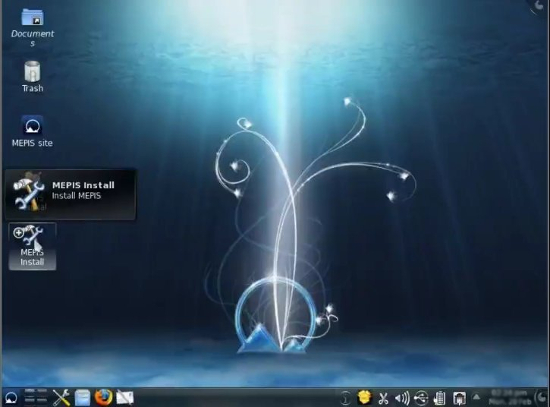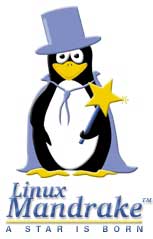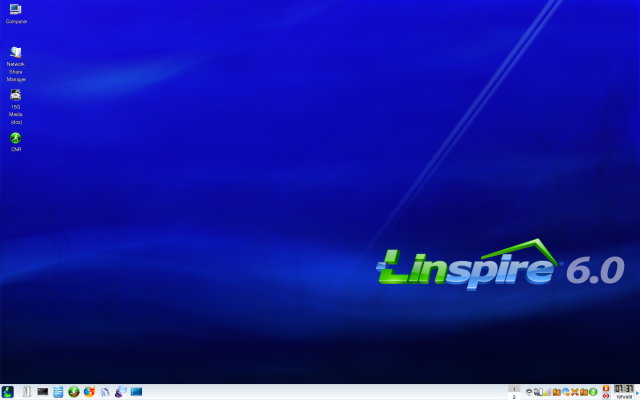
Once upon a time SimplyMEPIS, Mandrake Linux, and Lindows were popular and generated a lot of attention. Where are they now?
SimplyMEPIS
Way back around 2003 entrepreneur and technologist Warren Woodford released the first version of SimplyMEPIS. Mr. Woodford felt that the popular desktop Linux distros had too many rough edges, so he built his own sleek distro based on Debian and KDE 3.1.2. New releases appeared every 6-12 months, and each release was more polished and user-friendly. Nice helper utilities like MEPIS X-Windows Assistant, MEPIS System Assistant, and MEPIS Network Assistant made system administration easier. It hit the upper range of the DistroWatch rankings and stayed there for several years. My friend and colleague Steven J. Vaughan-Nichols called it SimplyMEPIS: The best desktop Linux you haven’t tried.
But that was then, and now MEPIS appears to be defunct. SJVN observes that “Back in the day, I loved MEPIS. It was a great desktop distribution. But its founder, Warren Woodford, couldn’t make it pay so he’s gone on to other projects, and the community he left behind hasn’t been able to keep improving it. It really is a shame, but sometimes one person really is essential to a project’s success, and that has proven to be the case with Woodford and MEPIS.”
MEPIS had a lot of fans, and also detractors as Mr. Woodford started charging subscription fees and selling CDs, and making controversial comments about the GPL, like “Some people call me a whiner about the GPL, while from my point of view they are the whiners. The GPL deserves to be scrutinized closely and to be debated, as does any legal document that restricts people’s rights.” Then MEPIS got caught up in GPL compliance issues because they didn’t maintain their own source code respositories, but rather expected that users could fetch sources from upstream. (See A GPL requirement could have a chilling effect on derivative distros by Bruce Byfield.) As if that weren’t enough drama, there were also questions about the licensing of the proprietary tools in MEPIS; for a long time there was no license, and copying and re-distributing MEPIS CDs was restricted to “You can make copies of the SimplyMEPIS bootable CD and give them away for non-commercial purposes only.” Which is a GPL violation.
Later releases of MEPIS were built on a combination of Ubuntu and Debian sources. antiX Mepis was developed for older, less-powerful hardware. The current stable release is Mepis 11, which was released in 2011. It’s usable, but old, with a 2.6.36 kernel and KDE 4.5.3. In comparison, Ubuntu 14.04 has a 3.13.0 kernel and KDE 4.13. A MEPIS 12 beta was announced last year, 11.9.x, and if you poke around you might find a download. The active MEPIS community has moved to mepiscommunity.org, which hosts the newest antiX release, MX-14.
MEPIS had two domains: mepis.org, the community site, and mepis.com, the commercial site. mepis.org is still up with all  the old archives and occasional announcements, but mepis.com is now MEPIS Patent Monetization.
the old archives and occasional announcements, but mepis.com is now MEPIS Patent Monetization.
Mandrake Linux
Mandrake Linux was the easiest introduction to Linux for a whole lot of new Linux users, including me. Back in the 1990s, when there were both chain and mom and pop computer stores all over the place, you could buy Mandrake boxed sets in actual stores. It had a nice installer that knew what to do, and superior hardware detection, which was a big deal then because configuring audio and video could be a real nightmare. It came in many flavors: Mandrake Linux Free, which contained only Free and no-cost software, Mandrake Linux One, which included non-Free codecs and drivers, Discovery for novice users, Corporate Server and Desktop, Firewall, and portable versions for CD and USB sticks. The good Mandrake people were all full of ideas, and pushed out a steady of stream of excellent graphical tools for system and network administration, and nicely-polished releases.
Mandrake lost a trademark lawsuit brought by King Features, who for whatever weird reason felt that Mandrake Linux infringed their Mandrake the Magician character. So they became Mandrakelinux. Then they bought Conectiva, which was a nice Brazilian distro, and merged the names to become Mandriva.
Mandriva has had many financial ups and downs, and in 2010 laid off most of the Mandriva developers and maintainers. These former employees forked Mageia Linux from Mandriva, and created a non-profit organisation (Mageia.org) to support it. Mageia is community-supported, free of cost, and is a top-quality distro.
Mandriva is still in business, selling enterprise software.
Linspire
Remember Lindows? It was one of the most ambitious distros, the first to take on Microsoft Windows head-on. Founder Michael Robertson wanted to develop a friendly, polished distro that could run major Windows applications such as MS Office, and to get it on OEM PCs and into stores. In 2002 you could buy Lindows PCs at Walmart. But poking the behemoth is risky, and Lindows paid the price. Microsoft sued them and lost. But big bank accounts never really lose, so Microsoft kept suing, and then offered a settlement. They paid Lindows $20 million and got the rights to the name, so Lindows became Linspire.
 Linspire’s Click’N’Run is the precursor to Ubuntu’s Software Center, a graphical front-end to apt-get that also installs commercial software. Linspire was an active community supporter and supported ReiserFS, several KDE projects, and hosted conferences.
Linspire’s Click’N’Run is the precursor to Ubuntu’s Software Center, a graphical front-end to apt-get that also installs commercial software. Linspire was an active community supporter and supported ReiserFS, several KDE projects, and hosted conferences.
Linspire was based on Debian, and just like MEPIS got in trouble for not making source code available. They generated considerable controversy with their 2007 agreement with Microsoft, which included some document and multimedia interoperability goals, and patent covenants for Linspire. (Groklaw published a detailed critical analysis.)
Xandros bought Linspire in 2008, and that was the end of Linspire. Like it or dislike it, Linspire lived for six action-packed years and stirred up both the FOSS and proprietary computing worlds.


